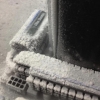How to properly configure my system and SSD?
Go to solution
Solved by Average_Joe,
What I've done:
- Enabled AHCI mode in BIOS
- Enabled S.M.A.R.T. in BIOS
- Updated to the latest firmware (5.26)
- Installed Windows 7
- I'm using msahci driver
- I typed "fsutil behavior query DisableDeleteNotify" and it returned a zero, so I'm using TRIM as well.
- My mind has been blown, I'll never use an HDD for my OS and programs ever again.
EDIT: - Turned off scheduled disk defragmentation for the SSD.
Thanks to everyone for helping me ![]()


















Create an account or sign in to comment
You need to be a member in order to leave a comment
Create an account
Sign up for a new account in our community. It's easy!
Register a new accountSign in
Already have an account? Sign in here.
Sign In Now